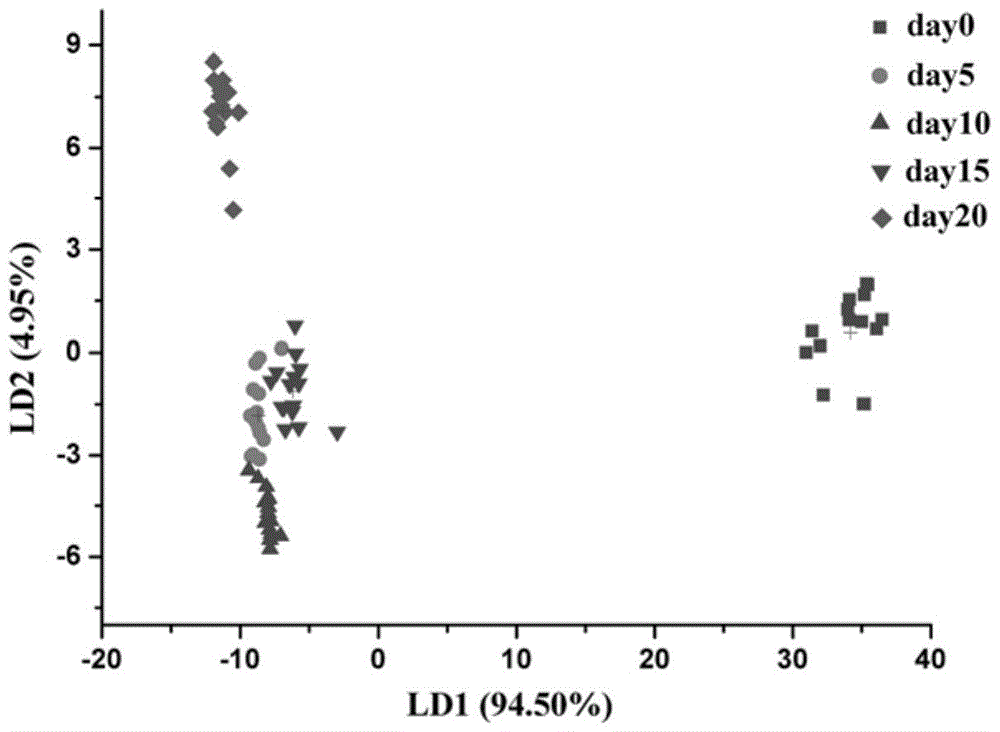Rapid nondestructive distinguishing method of Chinese walnuts with different fresh degrees based on electronic nose
A technology of freshness and hickory, applied in the direction of material resistance, etc., can solve the problems of long time consumption, poor repeatability, complex physical and chemical index detection, etc., and achieve the effect of high discrimination accuracy and simple operation
- Summary
- Abstract
- Description
- Claims
- Application Information
AI Technical Summary
Problems solved by technology
Method used
Image
Examples
Embodiment
[0027] In this embodiment, artificially aged hickory nuts are used instead of naturally aged hickory nuts. It has been verified that the physical and chemical indicators of fresh hickory nuts stored at 35°C and 30% relative humidity for 10 days and 20 days are almost the same as those of hickory nuts stored at 4°C for 1 year and 2 years. It is the theoretical basis for artificially aged hickory nuts to replace natural aged hickory nuts. The specific artificial aging method is to put the selected pecans in a constant temperature and humidity box with a temperature of 35°C and a relative humidity of 30%, and take out a batch of pecan samples as a freshness every 5 days. 4 batches, plus fresh pecans, a total of 5 batches of pecan samples with different freshness, numbered day0, day5, day10, day15, day20 respectively.
[0028] In this embodiment, a PEN2 electronic nose from Airsense Company of Germany is used as a detection instrument for detailed description. The sensor array u...
PUM
 Login to View More
Login to View More Abstract
Description
Claims
Application Information
 Login to View More
Login to View More - R&D
- Intellectual Property
- Life Sciences
- Materials
- Tech Scout
- Unparalleled Data Quality
- Higher Quality Content
- 60% Fewer Hallucinations
Browse by: Latest US Patents, China's latest patents, Technical Efficacy Thesaurus, Application Domain, Technology Topic, Popular Technical Reports.
© 2025 PatSnap. All rights reserved.Legal|Privacy policy|Modern Slavery Act Transparency Statement|Sitemap|About US| Contact US: help@patsnap.com



